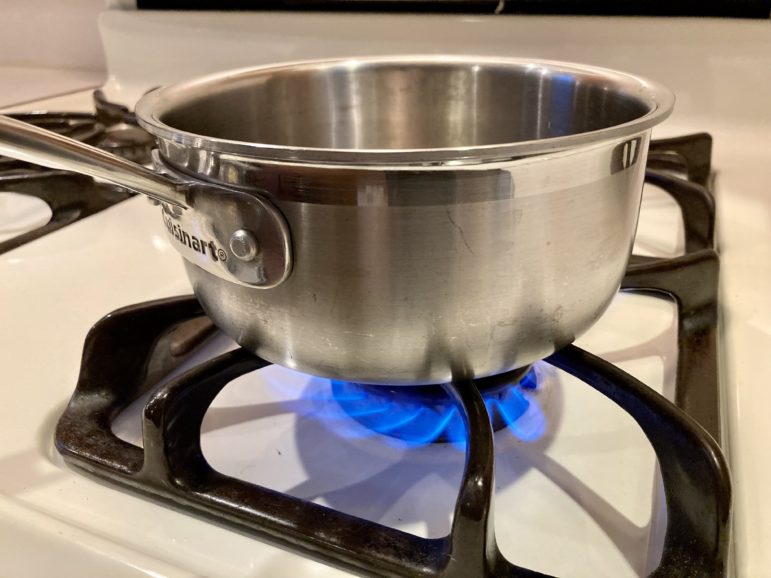“New York State laid out the strategy for equitably addressing the climate crisis. Now we must pass the NY HEAT Act to ensure we can deliver on that promise and make New York a leader in addressing ‘the single biggest health threat facing humanity.'”

The WHO calls climate change “the single biggest health threat facing humanity.” Whether it’s deadly hurricanes, diseases, food scarcity, water quality, or air pollution, the climate crisis is killing people—as many as 5 million per year, according to a recent study.
We see that firsthand in communities of color and low income in New York City. According to a 2017 city report, more than 100 New Yorkers die per year “from natural causes exacerbated by extreme heat,” which is the deadliest impact of climate change. And in New York City, 70 percent of the emissions that cause climate change come from buildings burning fossil fuels. New York is at an inflection point this year, where we can enact bold laws that protect people, or we can continue to let people be killed by the climate crisis.
New York State has developed the Climate Leadership and Community Protection Act (CLCPA), the best plan in the nation for addressing the climate crisis and improving public health. However, this will fail if we do not address the fact that we still have two outdated rules that can be found in New York’s Public Service Law. The gas industry is using these old laws to undermine the state’s emission reduction efforts at the expense of ratepayers, forcing them to subsidize gas infrastructure and continue its legacy of pollution.
The “100-foot rule” in Public Service Law section 31(4) requires ratepayers to pay the gas industry to build and install gas pipelines to any building built within 100 feet of an existing gas line. In effect, it forces customers to subsidize new gas infrastructure that the utility can use to expand its customer base, whether or not it was actually needed. In fact, according to an RMI report, New Yorkers have been forced to fork over $1 billion to help gas utilities get 170,000 new customers in the past five years alone. In a time when over a million New Yorkers are in utility debt and energy prices are sky high, this law feels especially hurtful today.
The other problematic rule can be found in sections 30 and 31, outlining the utility’s obligation to provide service to customers who request it. This allows the gas industry to claim that they must continue to build new infrastructure even though New Yorkers and their representatives have given the state a mandate—via the CLCPA—to transition away from fossil fuels.
Given that the CLCPA is a sound plan for bailing New York out of the climate crisis, we are now urging the state to pass the New York Home Energy Affordable Transition (NY HEAT) Act , which will remove these outdated obstacles by adjusting the Public Service Law to align with the state’s emission reduction goals. The NY HEAT Act will eliminate the costly public subsidies under the 100-foot rule and shift the utilities focus to transitioning away from gas to focus on investing in healthier renewable energy infrastructure.
This bill also reflects the CLCPA mandate to safeguard low-income communities and communities of color by ensuring that they will not have to pay energy bills higher than 6 percent of their household income. Even as the affordable housing crisis gets worse, residents of these communities are still spending a disproportionate amount of their household income on their energy bills, due to unfair rate structures and the fact that they often live in energy inefficient homes.
This act is in the public’s best interest, both from an environmental standpoint as well as an economic one. Despite the state’s mandate to reduce economy-wide greenhouse gas emissions, gas utilities have continued to invest in gas infrastructure, which—according to a recent report from Synapse Energy Economics—will cost ratepayers an estimated $150 billion. The NY HEAT Act will require utilities to focus on meeting the targets of the CLCPA, including investing those dollars in clean renewable energy infrastructure.
For example, instead of wasting ratepayers’ hard-earned dollars on new gas lines that will be rendered useless within a decade, they could invest some of that money on programs that incentivize the transition from electric appliances such as induction stoves and heat pumps, especially in these low-income communities and communities of color.
WE ACT recently completed a pilot study in a New York City Housing Authority (NYCHA) development in the Bronx to better understand the impact of gas stoves on indoor air pollution. It found that households with induction stoves experienced a 35 percent reduction in daily nitrogen dioxide (NO2) concentrations compared to those using gas stoves, when controlling for temperature and apartment-level factors. Twenty-four-hour averages of carbon monoxide also saw a significant decrease. They also conducted controlled cooking tests, which found that NO2 concentrations in kitchens with gas stoves were on average 190 percent higher than those with induction stoves.
New York State laid out the strategy for equitably addressing the climate crisis. Now we must pass the NY HEAT Act to ensure we can deliver on that promise and make New York a leader in addressing “the single biggest health threat facing humanity.”
We need to stop subsidizing the gas industry’s efforts to undermine our emissions reduction goals and ensure that utilities are working to serve the public’s needs, not their own profit goals.
Karines Reyes, R.N., is a New York State assembly member for District 87 in The Bronx. Sonal Jessel, M.P.H., is the director of policy at WE ACT for Environmental Justice.








